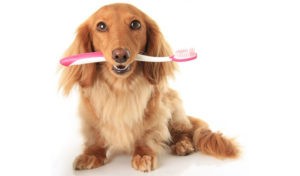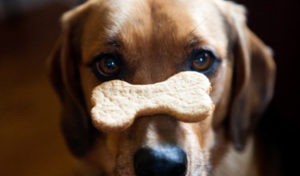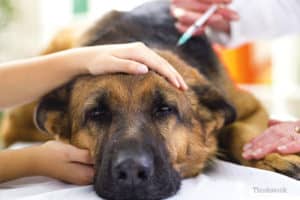 Everyone knows the definition of obesity — at least they think they know it when they see it. But it’s defined a little more narrowly than you might think: It’s when you (or your cat in this case) is storing extra fat. Any evaluation of obesity depends to a large extent on the animal’s individual characteristics.
Everyone knows the definition of obesity — at least they think they know it when they see it. But it’s defined a little more narrowly than you might think: It’s when you (or your cat in this case) is storing extra fat. Any evaluation of obesity depends to a large extent on the animal’s individual characteristics.
Obesity is usually caused by excessive food intake and insufficient exercise. According to some estimates, more than 50% of cats are overweight and 25% of cats are obese. Obesity is more common in older, less active felines and in spayed female felines whose weight is not well-managed. Cats that are fed bottomless bowls of food are more likely to be obese than others.
Obesity-related health problems abound. These include but are not limited to heart disease, a reduced life span, ruptured cruciate ligaments, labored or difficult breathing, fatigue/exercise intolerance, greater risk for heat stroke/heat exhaustion, greater susceptibility to fatty liver disease, diabetes, and osteoarthritis.
Symptoms and Identification
Identification of feline obesity is generally undertaken by implementing a charting method called body condition scoring, which results in a score between 1 and 5 or 1 and 9, depending on the specific chart applied. In both cases the idea is the same: 1 represents a too-thin cat, 5 or 9 is a morbidly obese one. 3 and 5 are considered ideal, while any cat scoring greater than 4 or 7 is considered overweight or obese.
The idea behind determining a BCS (body condition score) in cats has to do with identifying what’s ideal for each individual animal. Weight, after all, is not the overriding issue. How much extra weight a cat is carrying will vary widely even among members of the same breed.
The average domestic shorthaired cat should weigh 8 to 10 pounds (3.6 to 4.5 kg), though some individual and breed variation is to be expected. Here’s how to tell if your cat is fat:
If you put a hand on either side of your cat and firmly stroke his sides, you should be able to feel the ribs. This indicates that your cat is probably a proper weight. If you can’t feel the ribs, your cat is overweight. (If you can see the ribs, your cat is underweight.)
If you stand above your cat and look down at him or her, your cat’s waistline should be detectable as a slight indentation just behind the ribs.
A swinging pouch between your cat’s hind legs is a sign that your cat is overweight.
Your cat’s anal area should look clean. Some obese cats have trouble grooming this area.
A greasy patch, matting of fur, or flaking of skin down the midline of a cat’s lower back can also indicate obesity. His inability to reach this area (a part of normal grooming) due to his obesity is a sure sign that things need to change.
If a cat snores or wheezes, it could be a sign of obesity.
Affected Breeds
All breeds of cats seem equally predisposed to obesity.
Treatment
A weight-loss program designed by a veterinarian for a cat’s individual needs is the ideal approach to weight loss in cats. Typically, this weight loss is achieved via a two-pronged approach: diet and exercise.
Consulting a veterinarian before changing any cat’s eating and exercise habits is critical. When helping your cat lose weight, slower is safer. Crash diets aren’t appropriate. When on a weight-loss program, your cat should lose approximately 1 pound per month.
The most effective weight-loss plans involve increasing activity and feeding fewer calories. There are several dietary strategies for helping a cat lose weight. Veterinarians may suggest one or more of the following:
Feeding a cat the same amount of food delivered in smaller meals more often can help cats burn calories more efficiently.
Feeding a cat less of his regular food per day is almost always a fruitful endeavor, weight loss-wise. This strategy is most effective when paired with increased activity. A veterinarian should always be involved in helping an owner determine how significant a percentage decrease in calories is appropriate.
Instead of feeding a cat less, gradually switching him to a low-calorie food can help. The change should be gradual; any sudden switch could upset a cat’s stomach.
Unless specifically recommended by a veterinarian, feeding table scraps is not recommended.
Feline-formulated treats should be offered only on special occasions unless they are being administered to meet certain therapeutic goals (e.g., for tartar control or for administering medications). If treats must be given, don’t forget to include these calories when counting how many calories your cat should get each day.
Recent reports have suggested that wet or moistened diets may be healthier for cats, but check with your veterinarian about the best strategy for your cat and your lifestyle.
Cats may be encouraged to become more active and lose weight if owners schedule regular play times. Here are some calorie-burning activities for cats:
1. Chasing (e.g., use string, sticks with attached feathers, balls, or laser pointers[never point these at an animal’s or person’s eyes])
2. Climbing a cat tree
3. Scratching on posts or pads
4. Playing with other pets
5. Performing tricks for low-calorie treats (e.g., train your cat to run to you from across the house or climb a cat “tree” when you shake the treat container)
6. Trying to remove kibbles from specially designed activity toys
Prevention
The easiest way to deal with feline obesity is to prevent it.
Ask us to assess your cat’s body condition score and taking the above weight-loss measures before an animal is obese is the ideal approach.




